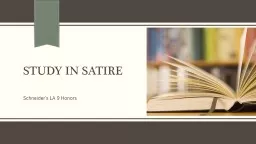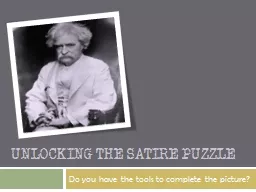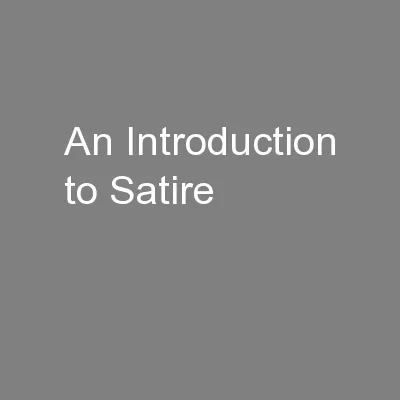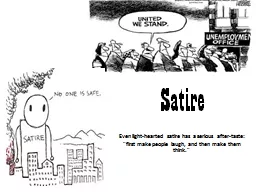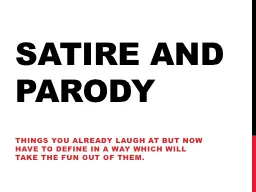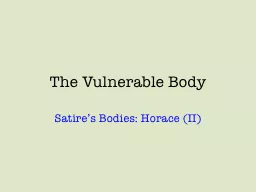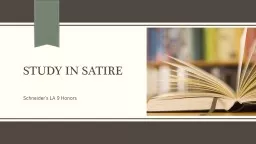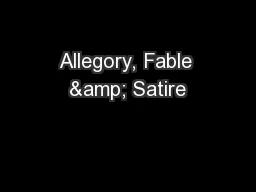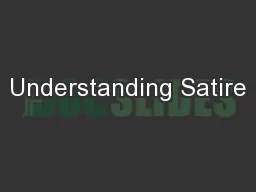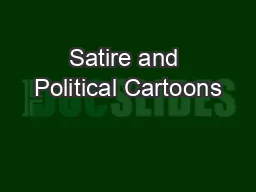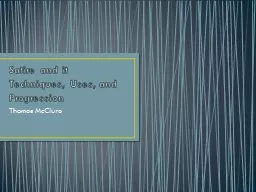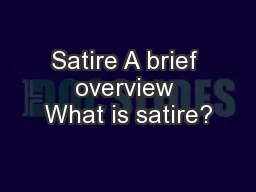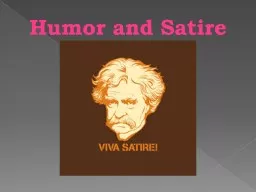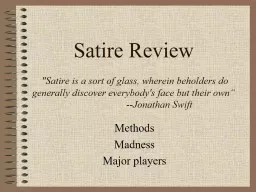PPT-Study in Satire
Author : cheryl-pisano | Published Date : 2017-09-08
Schneiders LA 9 Honors DEFINITION The literary art of diminishing a subject by making it ridiculous and evoking toward it attitudes of amusement contempt scorn or
Presentation Embed Code
Download Presentation
Download Presentation The PPT/PDF document "Study in Satire" is the property of its rightful owner. Permission is granted to download and print the materials on this website for personal, non-commercial use only, and to display it on your personal computer provided you do not modify the materials and that you retain all copyright notices contained in the materials. By downloading content from our website, you accept the terms of this agreement.
Study in Satire: Transcript
Download Rules Of Document
"Study in Satire"The content belongs to its owner. You may download and print it for personal use, without modification, and keep all copyright notices. By downloading, you agree to these terms.
Related Documents

